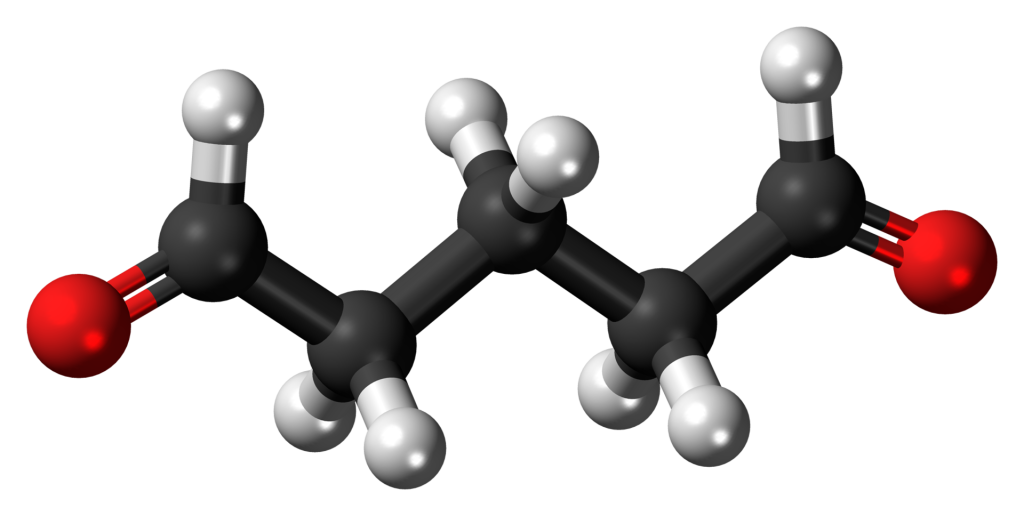Introduction
Glutaraldehyde is a colorless liquid with a pungent odor. It is a versatile chemical with a wide range of uses, including as a disinfectant, water treatment agent, and fixative. However, glutaraldehyde is also a known irritant and can be hazardous if inhaled, swallowed, or absorbed through the skin.
What is Glutaraldehyde?
Glutaraldehyde is a chemical compound with the formula C5H8O2. It is a member of the dialdehyde family, which are characterized by two aldehyde groups (-CHO) attached to a common carbon atom. Glutaraldehyde is a clear, oily liquid with a boiling point of 188 degrees Celsius (370 degrees Fahrenheit).
Uses of Glutaraldehyde
Glutaraldehyde has a wide range of uses due to its strong disinfecting and sterilizing properties. It is commonly used in the following applications:
- Disinfectant for medical and dental equipment: Glutaraldehyde is a broad-spectrum disinfectant that is effective against a wide range of microorganisms, including bacteria, viruses, and fungi. It is used to disinfect surgical instruments, endoscopes, and other medical equipment.
- Water treatment: Glutaraldehyde is used to treat wastewater and industrial water supplies. It is effective at controlling microorganisms that can cause disease or contamination.
- Fixative and preservative: Glutaraldehyde is a fixative that is used to preserve biological tissues for histological and pathological studies. It is also used as a preservative in embalming fluids.
Health Risks of Glutaraldehyde Exposure
Glutaraldehyde is a known irritant and can cause a variety of health problems if inhaled, swallowed, or absorbed through the skin. Symptoms of glutaraldehyde exposure can include:
- Irritation of the eyes, skin, and respiratory system: Glutaraldehyde can cause severe eye, nose, throat, and lung burning and irritation.
- Dermatitis and skin burns: Direct contact with glutaraldehyde can cause skin irritation and burns.
- Systemic effects: Symptoms of poisoning include headaches, dizziness, and drowsiness, as well as abdominal pain.
- Allergy and asthma: Glutaraldehyde can also cause allergy or asthma symptoms if inhaled.
Regulations
The Occupational Safety and Health Administration (OSHA) and the National Institute for Occupational Safety and Health (NIOSH) have set a Ceiling Limit (C) of 0.2 ppm for glutaraldehyde exposure in the workplace. This means that the concentration of glutaraldehyde in the air should never exceed 0.2 ppm averaged over an 8-hour period.
Measuring Glutaraldehyde Levels
Glutaraldehyde can be measured in the air using a variety of methods, including:
- Glutaraldehyde badge: This is a passive monitoring device that changes color in response to exposure to glutaraldehyde.
- VOC monitors: These monitors measure a wide range of volatile organic compounds, including glutaraldehyde.
- Specific glutaraldehyde sensors: These sensors are designed to detect and measure glutaraldehyde specifically.
All of those units can be found here: https://www.gas-sensing.com/information/glutaraldehyde
Conclusion
Glutaraldehyde is a powerful disinfectant with a wide range of uses. However, it is important to handle glutaraldehyde with care, as it can be hazardous if inhaled, swallowed, or absorbed through the skin. Workers who are exposed to glutaraldehyde should wear appropriate personal protective equipment (PPE), including gloves, safety glasses, and a respirator. Employers should also have a plan in place to respond to glutaraldehyde spills and exposures.


